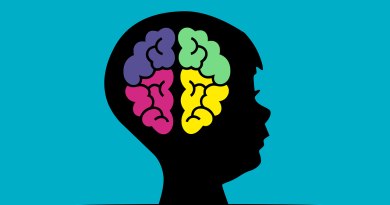T.R.I.U.M.P.H. Principles For Child Success
In the realm of child development, innovative approaches are continually emerging. Among these, the T.R.I.U.M.P.H. Method, developed by an award-winning educator and founder of BestKidsSolutions.com, stands out. The T.R.I.U.M.P.H. principles for child success are the new standard in child success.
This method is a comprehensive framework designed to enhance emotional intelligence and cognitive development in children.
T. for Temperance (Self-Regulation)
Temperance, or self-regulation, is a cornerstone of the T.R.I.U.M.P.H. Method, playing a pivotal role in children’s emotional and behavioral management.
This principle is not just about controlling impulses but also about understanding and navigating emotions constructively. For example, when a young student who often feels overwhelmed by classroom challenges.
Through the T.R.I.U.M.P.H. Method, they learns self-regulation techniques, including deep breathing and the method introduces the physiological sigh, a powerful tool in the self-regulation arsenal.
This technique, backed by neuroscience, involves taking a double inhale followed by a longer exhale. This specific breathing pattern triggers a response in the nervous system that helps to rapidly calm the body. When a child feels anxious or upset, they can practice the physiological sigh.
The first deep inhale fills their lungs, and the second smaller inhale adds a little more air, stretching the lung’s air sacs (alveoli). This stretching sends a signal to her brain to slow down the heart rate, leading to a sense of calm. The extended exhale that follows helps in releasing the built-up tension.
By practicing this technique, the child finds that they can calm themselves more effectively, allowing them to approach situations with a clearer mind and improved focus.
Incorporating such techniques into daily routines empowers children to develop mastery over their emotional responses. This skill is invaluable, not only in childhood but as a foundational tool for emotional well-being throughout life.
R. for Resilience
Resilience, a fundamental aspect of the T.R.I.U.M.P.H. principles for child success is the capacity to recover and grow from challenges.
This principle is particularly relevant in educational environments, where it manifests in students who, despite facing academic difficulties, show a steadfast commitment to improvement.
Their educational journey is characterized not just by the obstacles they encounter but more importantly, by their persistent efforts to overcome these challenges.
The experiences of these students serve as a testament to the idea that the true setback isn’t in falling, but in the refusal to get up one more time than they’ve been knocked down.
When confronted with a difficult subject or concept, these students view each struggle not as a failure but as a stepping stone to greater understanding.
This crucial shift in mindset transforms their approach to learning, making them more receptive to seeking help, trying various problem-solving strategies, and learning from their mistakes.
Moreover, resilience in the classroom transcends mere academic perseverance. It’s about developing a mindset that sees challenges as opportunities for personal growth.
When these students face a tough academic concept, they don’t give up; instead, they remember that every attempt, successful or not, contributes to building their resilience.
This attitude instills in them, and their peers, the value of discipline and the understanding that true learning often arises from the process of overcoming obstacles.
Embracing the principle of Resilience in the T.R.I.U.M.P.H. method teaches children that success is not defined by a lack of difficulties but by the ability to rise each time they fall.
This lesson in resilience prepares them not just for academic challenges but for a wide range of life experiences.
I. for Interaction (Communication)
Effective communication and interaction skills are not just beneficial but crucial for success in almost every aspect of life. The T.R.I.U.M.P.H. method places significant emphasis on this principle, recognizing its vital role in children’s social and emotional development.
This focus is on nurturing strong social skills, which are foundational for building supportive relationships and expressing oneself with confidence and clarity.
In the classroom and beyond, children are encouraged to engage in activities that foster open dialogue and active listening.
This involves teaching them how to articulate their thoughts and feelings respectfully and understandably, as well as how to interpret and respond to the communication of others.
For instance, group projects and collaborative activities become platforms for practicing these skills, where children learn the art of negotiation, the importance of empathy in communication, and the value of diverse perspectives.
Moreover, the development of interaction skills extends to understanding non-verbal cues, such as body language and facial expressions, which are integral parts of effective communication. Children learn to read these subtle signals, enhancing their ability to connect with others on a deeper level.
Incorporating role-playing exercises is another effective strategy within this principle. These exercises allow children to simulate various social scenarios, helping them to develop adaptability and empathy.
By stepping into different roles, children gain insights into others’ experiences and viewpoints, fostering a more inclusive and understanding approach to communication.
Additionally, the T.R.I.U.M.P.H. Method recognizes the importance of digital communication in the modern world. Children are guided on how to interact respectfully and responsibly in online environments, understanding the impact and permanence of their digital footprints.
Through the principle of Interaction, children are equipped not only with the tools for effective communication but also with the understanding that successful interactions are a two-way street, involving both speaking and listening.
These skills are crucial for personal relationships, academic collaborations, and future professional environments, laying a foundation for a lifetime of successful interactions.
U. for Understanding (Perspective Thinking and Empathy)
Understanding, as a key component of the T.R.I.U.M.P.H. principles for child success goes beyond the basic tenets of empathy.
It involves cultivating the ability in children to think from others’ perspectives, fostering a deeper level of compassion and connection. This principle is essential in nurturing emotionally intelligent individuals who can relate to and understand the feelings and thoughts of others.
In practical terms, teaching understanding starts with encouraging children to consider situations from viewpoints other than their own.
This could be through discussions about characters in a story, analyzing various outcomes in historical events, or even considering the feelings of their peers in conflict resolution scenarios.
By actively engaging in these exercises, children learn to appreciate the diversity of thoughts and experiences, leading to a more inclusive and empathetic outlook.
Another aspect of developing understanding is through empathy exercises.
These can include activities where children are asked to imagine themselves in someone else’s situation or to express what they think another person might be feeling in a given scenario.
Such exercises help children to not only recognize but also to feel the emotions of others, thereby deepening their emotional intelligence.
Moreover, understanding the T.R.I.U.M.P.H. Method also encompasses teaching children about cultural and social differences.
This includes discussions and lessons on various cultures, lifestyles, and beliefs, helping children to appreciate and respect diversity. Such knowledge is crucial in today’s globalized world, where understanding and respecting differences is key to harmonious coexistence.
In addition to these, the method also integrates activities that promote active listening skills. Children are taught to listen attentively, not just to respond, but to truly understand what the other person is saying. This skill is vital in building meaningful relationships and effective communication.
Through the principle of Understanding, children are equipped with the tools to build stronger, more empathetic relationships. They learn that understanding others is not just about intellectual comprehension but also about emotional connection.
This principle prepares them to navigate the complexities of human relationships both in their immediate environments and in the broader global community.
M. for Movement (Mind-Body Connection)
The Movement principle within the T.R.I.U.M.P.H. Method underscores the critical role of physical activity in enhancing not just the physical, but also the cognitive and emotional well-being of children.
As a physical education teacher, the perspective on movement transcends conventional views of physical fitness, delving into its profound impact on overall child development.
Physical activity, encompassing a wide array of activities like sports, dance, yoga, and playground games, is integral to the holistic growth of children.
It’s not solely about building physical strength or agility; it’s about nurturing the mind-body connection. Regular engagement in physical activities has been shown to boost neuroplasticity – the brain’s ability to adapt and grow, which is vital during the formative years.
Incorporating movement into the daily routine of children is a key focus. This integration is not just a diversion from academic learning but a complementary element that enhances learning capabilities.
Activities like morning exercises or active breaks during the day have been observed to significantly improve students’ concentration, memory retention, and overall mood, thereby enhancing their academic performance.
Beyond the cognitive benefits, movement plays a pivotal role in the social and emotional development of children.
Participating in team sports and group activities fosters essential life skills such as teamwork, communication, empathy, and resilience. These settings offer real-life lessons in cooperation, handling both success and failure, and the value of consistent effort and practice.
Addressing the sedentary lifestyle prevalent among many children today, the Movement principle also emphasizes the importance of establishing a habit of regular physical activity.
This habit not only contributes to immediate health benefits but also sets the foundation for a healthier lifestyle into adulthood.
As a physical educator, the approach to movement is inclusive and engaging, ensuring that activities are accessible and enjoyable for all students, regardless of their athletic abilities. This inclusive approach promotes a positive self-image among children and encourages a lifelong appreciation for physical activity.
Through the Movement principle in the T.R.I.U.M.P.H. Method, children gain a comprehensive array of benefits – physical robustness, cognitive sharpness, emotional resilience, and social adeptness.
This principle reinforces the understanding that movement is a vital component of a child’s overall development and well-being.
P. for Practice (Lifelong Learning)
The Practice principle within the T.R.I.U.M.P.H. principles for child success is fundamental in cultivating a mindset that views education not as a finite task but as a continuous, enriching journey.
This principle goes beyond the traditional confines of classroom learning, encouraging children to embrace learning as an ongoing process that extends throughout life.
In the context of Practice, learning is seen as an ever-evolving adventure, where curiosity and exploration are key drivers. Children are encouraged to view each new piece of knowledge or skill not as an end in itself but as a stepping stone to further discovery.
This approach fosters a natural inclination towards inquiry and exploration, making learning a more engaging and enjoyable experience.
The Practice principle also emphasizes the importance of applying learned concepts in various contexts. This application reinforces understanding and helps children see the relevance of their education in the real world.
For instance, a math lesson is not just about solving equations on paper; it’s about understanding how these equations can be applied in everyday situations, like budgeting or understanding scientific phenomena.
Moreover, this principle encourages resilience in learning. Children learn that mastery is a process that involves trial and error and that mistakes are valuable growth opportunities.
This mindset helps to reduce the fear of failure and builds confidence in their ability to learn and adapt.
Incorporating diverse learning methods and resources is another aspect of the Practice principle.
This includes using technology, interactive activities, field trips, and project-based learning, all of which make learning more dynamic and relevant to the children’s interests and experiences.
Additionally, the Practice principle advocates for the development of self-directed learning skills.
Children are guided to set their own learning goals, seek out resources, and take initiative in their educational journey. This self-directed approach instills a sense of ownership and responsibility for their learning, key components of lifelong learning.
Through the Practice principle in the T.R.I.U.M.P.H. Method, children are equipped not just with knowledge and skills, but with a passion for learning that lasts a lifetime.
They learn to appreciate the journey of learning as much as, if not more than, the destination, preparing them for a future where continuous learning is a key to personal and professional success.
For more information on Practice and Lifelong learning check out our article How Cognitive Self-Optimization Shapes Successful Children
H. for Hypothesize (Critical Thinking)
The Hypothesize principle within the T.R.I.U.M.P.H. Method emphasizes the development of critical thinking skills, a cornerstone of intellectual growth and problem-solving abilities in children.
This principle is about much more than just learning to think; it’s about learning to think analytically, question existing ideas, and apply information in innovative and effective ways.
Critical thinking involves teaching children how to approach problems and questions with an open and inquisitive mind. It encourages them to not just accept information at face value but to delve deeper, asking ‘why’ and ‘how’ questions that lead to a greater understanding of the subject matter.
For instance, in a science class, children might be encouraged to hypothesize why certain reactions occur, leading them to explore concepts of chemistry or physics more deeply.
Hypothesize also involves teaching children to recognize biases, both in their thinking and in the information presented to them. This awareness helps them to evaluate information more objectively and form more balanced, well-reasoned opinions.
This principle also fosters creativity in problem-solving.
Children learn to think outside the box, exploring multiple solutions to a given problem. This approach is particularly effective in project-based learning, where students are given a problem or a challenge and must come up with creative solutions, often working collaboratively.
Moreover, the Hypothesize principle encourages children to apply their knowledge in real-world scenarios. This application not only reinforces their learning but also demonstrates the practical relevance of their education.
Incorporating the the Hypothesize principle in education prepares children for a future where critical thinking is a key skill.
In an age of information overload, the ability to analyze, question, and apply information effectively is more important than ever. Through this principle, children develop into thoughtful, informed individuals capable of making reasoned decisions and contributing meaningfully to society.
T.R.I.U.M.P.H Principles For Child Success
T.R.I.U.M.P.H. principles for child success is an integrative educational approach that goes beyond traditional teaching, focusing on the comprehensive development of children.
It encompasses Temperance (self-regulation), Resilience (persistence), Interaction (communication), Understanding (empathy), Movement (physical activity), Practice (lifelong learning), and Hypothesize (critical thinking).
This method not only fosters academic excellence but also cultivates emotional intelligence, social skills, and a love for continuous learning. By integrating these principles, the T.R.I.U.M.P.H. Method prepares children for a well-rounded life, equipping them with essential skills for personal and professional success.
These principles were inspired by the works of Daniel Goleman.




